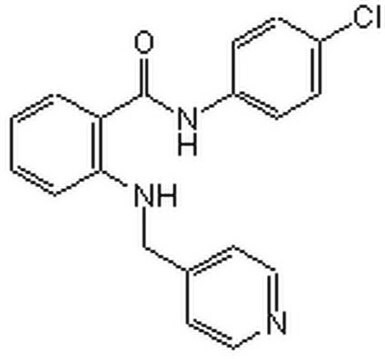685070
F8T2
99.9%
Synonim(y):
Poly(9,9-dioctylfluorene-alt-bithiophene), Poly[(9,9-dioctylfluorenyl-2,7-diyl)-co-bithiophene], Poly[[2,2′-bithiophene]-5,5′-diyl(9,9-dioctyl-9H-fluorene-2,7-diyl)]
About This Item
Polecane produkty
Próba
99.9%
Postać
powder
masa cząsteczkowa
average Mn >20,000
fluorescencja
λex 400 nm; λem 497 nm in chloroform (at Mn = 20,000)
właściwości półprzewodników
P-type (mobility=5×10−3 cm2/V·s)
Powiązane kategorie
Opis ogólny
Polymer is end-capped with 3,5-dimethylbenzene.
Zastosowanie
Kod klasy składowania
11 - Combustible Solids
Klasa zagrożenia wodnego (WGK)
WGK 3
Temperatura zapłonu (°F)
Not applicable
Temperatura zapłonu (°C)
Not applicable
Certyfikaty analizy (CoA)
Poszukaj Certyfikaty analizy (CoA), wpisując numer partii/serii produktów. Numery serii i partii można znaleźć na etykiecie produktu po słowach „seria” lub „partia”.
Masz już ten produkt?
Dokumenty związane z niedawno zakupionymi produktami zostały zamieszczone w Bibliotece dokumentów.
Produkty
The development of high-performance conjugated organic molecules and polymers has received widespread attention in industrial and academic research.
Organic photovoltaics (OPVs) represent a low-cost, lightweight, and scalable alternative to conventional solar cells. While significant progress has been made in the development of conventional bulk heterojunction cells, new approaches are required to achieve the performance and stability necessary to enable commercially successful OPVs.
Thin, lightweight, and flexible electronic devices meet widespread demand for scalable, portable, and robust technology.
Nasz zespół naukowców ma doświadczenie we wszystkich obszarach badań, w tym w naukach przyrodniczych, materiałoznawstwie, syntezie chemicznej, chromatografii, analityce i wielu innych dziedzinach.
Skontaktuj się z zespołem ds. pomocy technicznej







